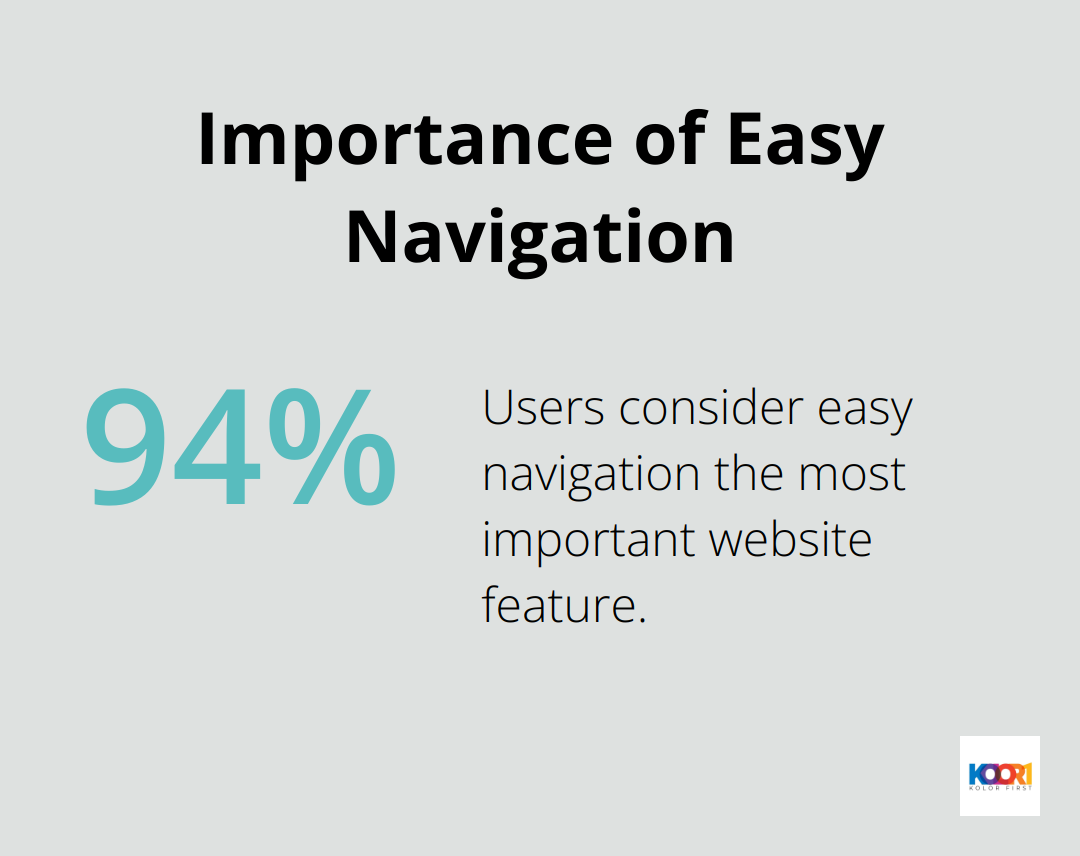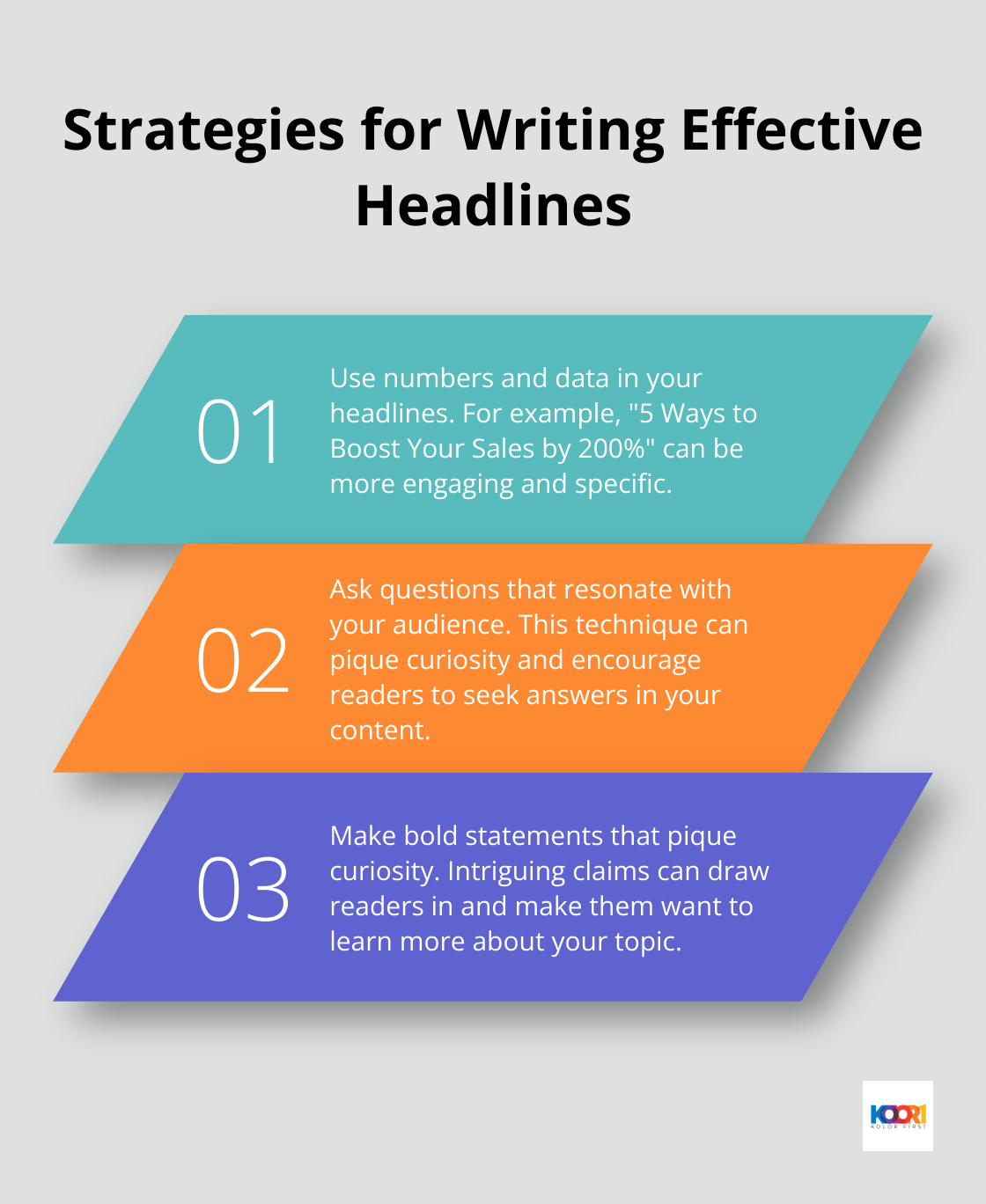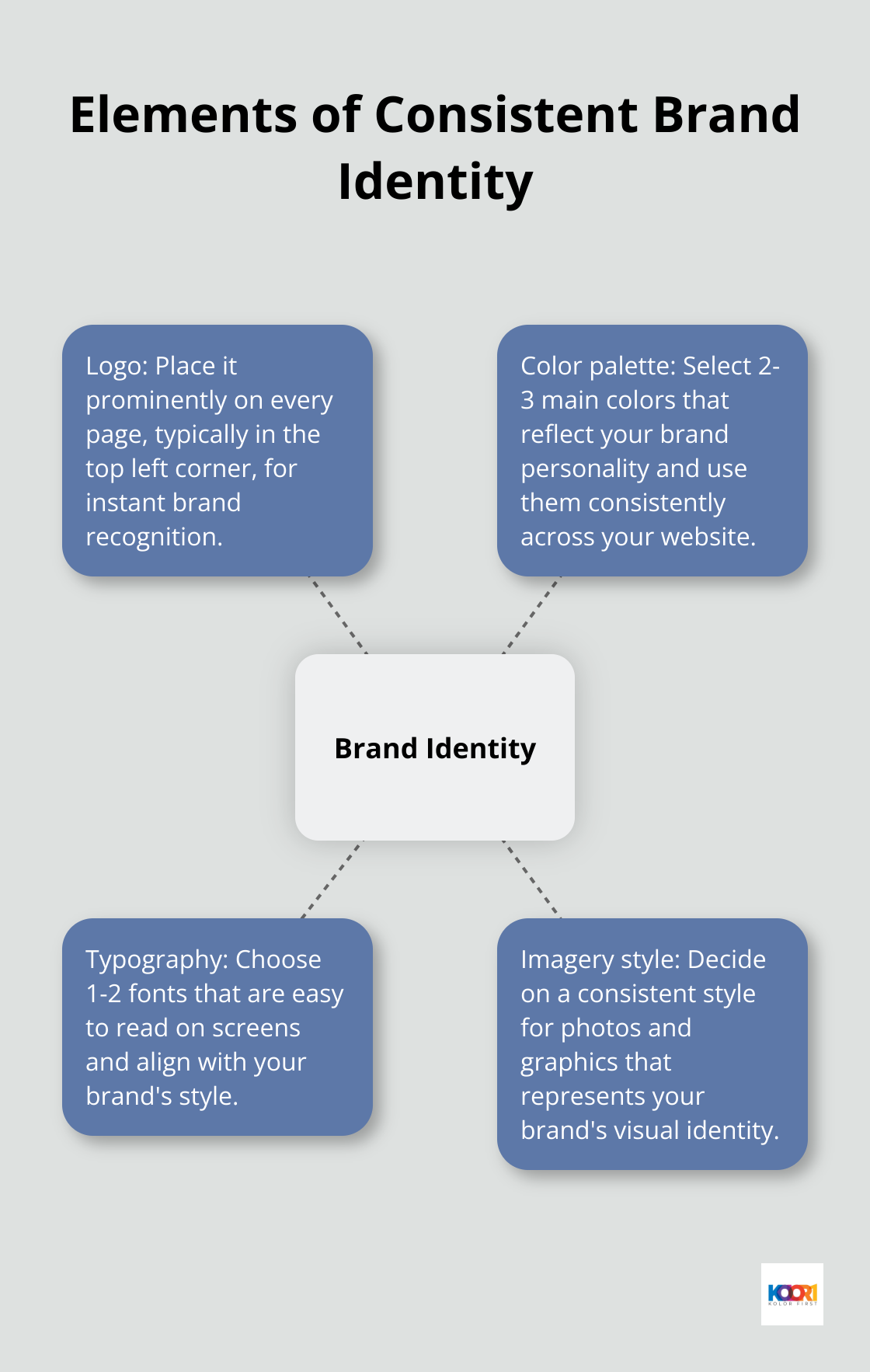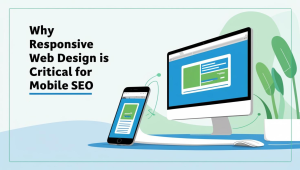At Kolorfirst LLC, we understand the challenges small businesses face when creating an online presence.
A well-designed website can make a significant impact on your business’s success. That’s why we’ve compiled essential web page design tips for small businesses to help you stand out in the digital landscape.
In this post, we’ll explore key elements of effective design, content creation strategies, and design principles tailored specifically for small business websites.
What Makes a Website Effective?
Clear and Intuitive Navigation
Your website’s navigation serves as a roadmap for visitors. It must be clear, consistent, and user-friendly. We suggest using descriptive labels for menu items and limiting main categories to 5-7. This strategy helps users locate information quickly, which enhances their overall experience.
A Nielsen Norman Group study revealed that 94% of users consider easy navigation the most important website feature. This statistic highlights the critical role of intuitive navigation in maintaining visitor engagement and encouraging site exploration.

Mobile-First Design Approach
Mobile devices now account for over 60% of web traffic, making mobile-friendly design essential. Google uses the mobile version of a site’s content for indexing and ranking. This is called mobile-first indexing.
We recommend using responsive design techniques to ensure optimal performance across all devices. This approach allows your website to adapt seamlessly to various screen sizes, providing an excellent viewing experience on smartphones, tablets, and desktop computers alike.
Optimized Speed and Performance
Website speed significantly impacts online success. A Portent study found that sites loading in 1 second have a conversion rate 3 times higher than those loading in 5 seconds. This stark difference underscores the importance of performance optimization.
To improve your website’s speed:
- Compress images and use appropriate file formats
- Minimize HTTP requests (combine files when possible)
- Utilize a content delivery network (CDN) for faster static content delivery
- Enable browser caching to store frequently accessed resources
These strategies can dramatically reduce load times and keep visitors engaged with your content.
Compelling Visual Design
An effective website combines functionality with aesthetics. Your visual design should reflect your brand identity and appeal to your target audience. Use high-quality images, consistent color schemes, and appropriate typography to create a visually pleasing experience.
Try to incorporate white space (also known as negative space) into your design. This technique improves readability and helps guide users’ attention to important elements on the page.
Engaging and Relevant Content
Content remains king in the digital world. Your website should offer valuable, up-to-date information that addresses your visitors’ needs and interests. Use clear, concise language and structure your content with headings and subheadings for easy scanning.
Include a mix of text, images, and (if appropriate) videos to cater to different learning styles and preferences. Regular content updates also signal to search engines that your site is active and relevant, potentially boosting your search rankings.
An effective website combines these elements to create a seamless, enjoyable experience for users. The next section will explore how to craft compelling content that captivates your audience and drives conversions.
How to Create Content That Converts
Craft Headlines That Grab Attention
Your headline is the first thing visitors see. It needs to pack a punch. Copyblogger reports that 8 out of 10 people read headline copy, but only 2 out of 10 read the rest. This statistic underscores the importance of attention-grabbing headlines.
To write effective headlines:
- Use numbers and data (“5 Ways to Boost Your Sales by 200%”)
- Ask questions that resonate with your audience
- Make bold statements that pique curiosity
- Include power words that evoke emotion
Keep your headlines concise. CoSchedule’s analysis of over 1 million headlines found that those with 6-7 words received the highest click-through rates.

Leverage the Power of Visual Content
Visual content processes 60,000 times faster than text, according to research by 3M Corporation. This fact highlights the importance of high-quality images and videos on your web pages.
When selecting visuals:
- Use authentic, high-resolution images that reflect your brand
- Create infographics to present complex data in an easily digestible format
- Incorporate short, engaging videos to explain products or services
A Wyzowl study found that 84% of people bought a product or service after watching a brand’s video. This statistic emphasizes the persuasive power of video content in driving conversions.
Implement Strategic Calls-to-Action
Your call-to-action (CTA) converts interest into action. Make your CTAs clear, compelling, and strategically placed.
HubSpot research found that tailored CTAs convert 202% better than basic CTAs. This finding underscores the importance of tailoring your CTAs to specific audience segments or user behaviors.
To optimize your CTAs:
- Use action-oriented language (“Get Your Free Trial Now”)
- Create a sense of urgency (“Limited Time Offer”)
- Make buttons stand out with contrasting colors
- Place CTAs where they naturally fit within the user’s journey
A/B testing is essential for CTA optimization. Small changes can lead to significant improvements in conversion rates. For instance, Unbounce found that changing a CTA button from green to red increased conversions by 21%.
Write Compelling Product Descriptions
Product descriptions play a vital role in converting visitors into customers. They should not only inform but also persuade. Try to highlight the unique features and benefits of your products or services (rather than just listing specifications).
Use sensory words to help customers imagine using your product. For example, instead of saying “soft fabric,” you could say “plush, velvety texture that feels luxurious against your skin.”
Include social proof in your descriptions. Customer reviews, ratings, or testimonials can significantly boost credibility and encourage purchases.
Now that we’ve covered how to create content that converts, let’s explore the design principles that will make your small business website visually appealing and user-friendly.
How to Design a Visually Appealing Small Business Website
Create a Consistent Brand Identity
Your website should extend your brand. Use consistent colors, fonts, and imagery across all pages. Consistent brand presentation across platforms can increase revenue by up to 33%. This statistic highlights the value of a cohesive look throughout your site.
Define your brand’s visual elements:
- Logo: Place it prominently on every page (typically in the top left corner).
- Color palette: Select 2-3 main colors that reflect your brand personality.
- Typography: Choose 1-2 fonts that are easy to read on screens.
- Imagery style: Decide on a consistent style for photos and graphics.
Create a style guide to ensure anyone working on your website maintains brand consistency.

Choose Colors That Evoke the Right Emotions
Colors influence how visitors perceive your brand. A study revealed that people make decisions within 90 seconds of their first impression of a product, and color alone contributes up to 90% of that assessment.
When selecting your color scheme:
- Consider your industry: Blue often works well for finance and technology, while green associates with health and nature.
- Think about your target audience: Younger audiences might respond better to bright, bold colors, while older demographics might prefer more subdued tones.
- Use contrast to guide attention: Make important elements like call-to-action buttons stand out with contrasting colors.
Tools like Adobe Color can help you create a harmonious color palette that aligns with your brand identity.
Utilize White Space and Visual Hierarchy
White space (or negative space) is the empty area between elements on your page. It’s not necessarily white; it’s simply the absence of content. Proper use of white space can increase comprehension by up to 20% (Human Factors International study).
To effectively use white space:
- Give your content room to breathe: Don’t cram too much information into one area.
- Use margins and padding generously: This helps separate different sections of your page.
- Break up large blocks of text: Use shorter paragraphs and bullet points for easier reading.
Visual hierarchy guides visitors’ eyes to the most important elements first. Use size, color, and positioning to emphasize key information. For example, make your main headline larger and bolder than subheadings, and place your most important content “above the fold” (visible without scrolling).
A cluttered website can overwhelm visitors and lead to high bounce rates. A clean, well-organized design not only looks more professional but also helps visitors find what they’re looking for quickly and easily.
Implement Responsive Design
With mobile devices accounting for over 50% of global web traffic, responsive design is no longer optional. A responsive website adapts seamlessly to different screen sizes, providing an optimal viewing experience across devices (from desktop computers to smartphones).
Try these responsive design techniques:
- Use flexible grid layouts that adjust based on screen size.
- Implement scalable images that resize without losing quality.
- Create breakpoints in your CSS to adjust layout for different screen widths.
A responsive design improves user experience and can positively impact your search engine rankings (Google uses mobile-friendliness as a ranking factor).
Optimize for Speed and Performance
Website speed significantly impacts user experience and conversion rates. A study by Portent found that conversion rates drop by an average of 4.42% with each additional second of load time (between seconds 0-5).
To improve your website’s speed:
- Compress images and use appropriate file formats.
- Minimize HTTP requests (combine files when possible).
- Use a content delivery network (CDN) for faster static content delivery.
- Enable browser caching to store frequently accessed resources.
These strategies can dramatically reduce load times and keep visitors engaged with your content. Regular performance audits (using tools like Google PageSpeed Insights) can help identify areas for improvement.
To create intuitive, visually appealing interfaces that users love, consider exploring web design example sites to gain insights from industry leaders and elevate your creativity with proven design strategies.
Final Thoughts
Effective web page design for small businesses combines aesthetics, functionality, and user-centric principles. Clear navigation, mobile-friendly design, and speed optimization create a solid foundation for a high-performing website. Compelling content with engaging headlines, quality visuals, and strategic calls-to-action transforms web pages into powerful conversion tools.
Brand consistency, thoughtful color schemes, and proper use of white space elevate a small business website from ordinary to exceptional. These elements work together to create a visually appealing and professional online presence that resonates with the target audience. A well-designed website that prioritizes user needs and preferences can significantly impact a business’s success.
We encourage you to implement these strategies in your web design efforts. Kolorfirst LLC specializes in creating innovative branding and digital marketing solutions that help businesses thrive online. Our expertise in creative branding, digital marketing, and UX consulting can help you implement these web design strategies effectively.






